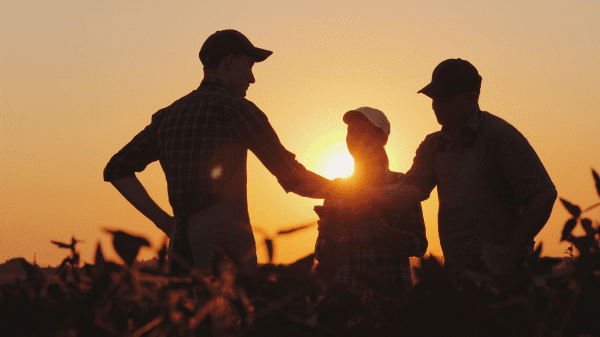Microsoft czar Bill Gates has gotten attention for his purchases of farmland: some 275,000 acres (another figure gives 242,000 acres).
This raises questions about institutional investors—those investing in farmland as one asset class among many.

One report by Agri Investor, cited by real estate investment expert Julie Price Bell, says institutional investors spent over $12 billion to acquire farmland in 2021. They own some 35 million acres of U.S. farmland: about 2 percent of the total.
Fruit and vegetable acreage is particularly attractive. Bell observes, “Institutions are particularly interested in high-quality farmland that is suited for growing high-value crops such as fruits, nuts, and vegetables. They are also drawn to farmland that is close to urban centers, as it has the potential for capital appreciation in the future.”
“Institutional investors are primarily buying farmland as a long-term investment to diversify their portfolios,” Bell continues. “They are looking for stable, low-risk investments that provide steady returns over the long term. Farmland is an ideal investment for these investors because it is relatively stable compared to other asset classes like stocks and bonds.”
When Business Insider asked Gates why he had gone into farmland, he replied, “I have invested in these farms to make them more productive and create more jobs. There isn’t some grand scheme involved,” although he added (more truthfully?), “Some are near cities and might end up having other uses.”
He added that all his purchases were “made by a professional investment firm.”
Farmland attracts institutional investors because, unlike the assets of a dot-com, it is tangible, visible, and unlikely to miraculously evaporate. Furthermore, as Bell notes, “By using the latest farming techniques, improving soil health and reducing water usage, they are able to increase yields and generate higher profits. Additionally . . . leasing the land to experienced farmers creates an additional steady cash flow stream.”
This begs a major question: whether institutional investors are certain or even likely to use the best agricultural practices to maintain and enhance the property’s value. Investors as a class are not immune to the temptations of sacrificing long-term value for short-term gains. They may make the usual pronouncements about sustainability, regenerative agriculture, and the like while acting in the opposite fashion.
One concern about institutional farmland investment is that it may reduce the number of “family farms” (a term with more emotional resonance than specificity of meaning). Indeed, in 1977, the Continental Illinois National Bank of Chicago dropped plans to invest tax-exempt pensions funds in a proposed $50 million Agland Fund, which had been denounced as a potential threat to family farms.
My own impression is that the typical grower does not regard institutional investors as rivals so much as potential purchasers. This is particularly true in family operations where one generation is retiring, and the younger generation does not want to continue. The older generation may be happy to find an institutional buyer.
Or the older generation may become rentiers themselves. “Approximately 39% of farmland in the U.S. is rented to farmers. More than half of cropland is rented and 25% of pastureland. Retired farmers make up 38% of farmland landlords,” according to Bell.
Institutional investment in farmland is here to stay, although it seems unlikely to overwhelm the American agricultural landscape. (For a concise history, see here).
Even so, institutional investors will find that they are no more immune to the caprices of the agricultural economy (climate, pests, price convulsions) than anybody else. To stay in for the long term, they will no doubt have to get used to these ups and downs.



